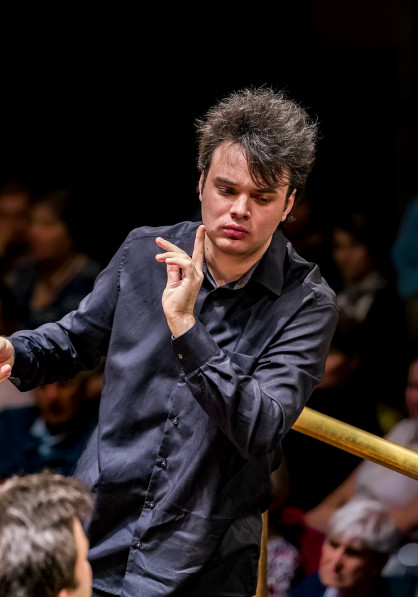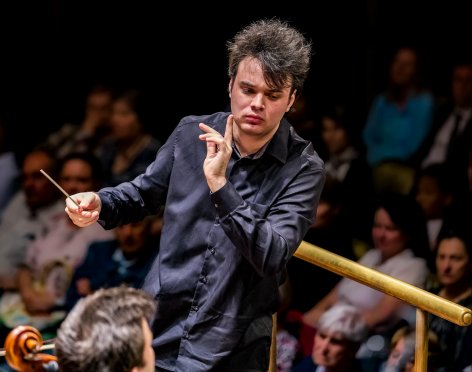This concert offers three voluminous and intentionally “big shots” of music history. In his Dance Suite, Bartók sought to make a cultural compilation from the Carpathian Basin and beyond, to set to music the ideal of universal fraternity and to raise the artistic prestige of folk music. Liszt was fine-tuning his Piano Concerto in E-flat major for 25 years, and by the time it was completed he had abandoned his career as a pianist. Yet, for the premier of this composition, he did again sit down to the piano, entrusting Berlioz with the baton. The composition is also one of the first examples of the structural feat in music when by the recurring themes and their transformation, we can hear a one- and a multi-movement composition at the same time. In his “Eroica” Symphony, Beethoven does not only concentrate on his attitude toward Napoleon but also on his own mission as a freedom-fighter and hero.
Three grand composers and two young talents.
Bartók, Liszt, Beethoven... and two highly gifted young musicians. It is certainly worthwhile to purchase tickets!
This concert offers three voluminous and intentionally “big shots” of music history. In his Dance Suite, Bartók sought to make a cultural compilation from the Carpathian Basin and beyond, to set to music the ideal of universal fraternity and to raise the artistic prestige of folk music. Liszt was fine-tuning his Piano Concerto in E-flat major for 25 years, and by the time it was completed he had abandoned his career as a pianist. Yet, for the premier of this composition, he did again sit down to the piano, entrusting Berlioz with the baton. The composition is also one of the first examples of the structural feat in music when by the recurring themes and their transformation, we can hear a one- and a multi-movement composition at the same time. In his “Eroica” Symphony, Beethoven does not only concentrate on his attitude toward Napoleon but also on his own mission as a freedom-fighter and hero.








































